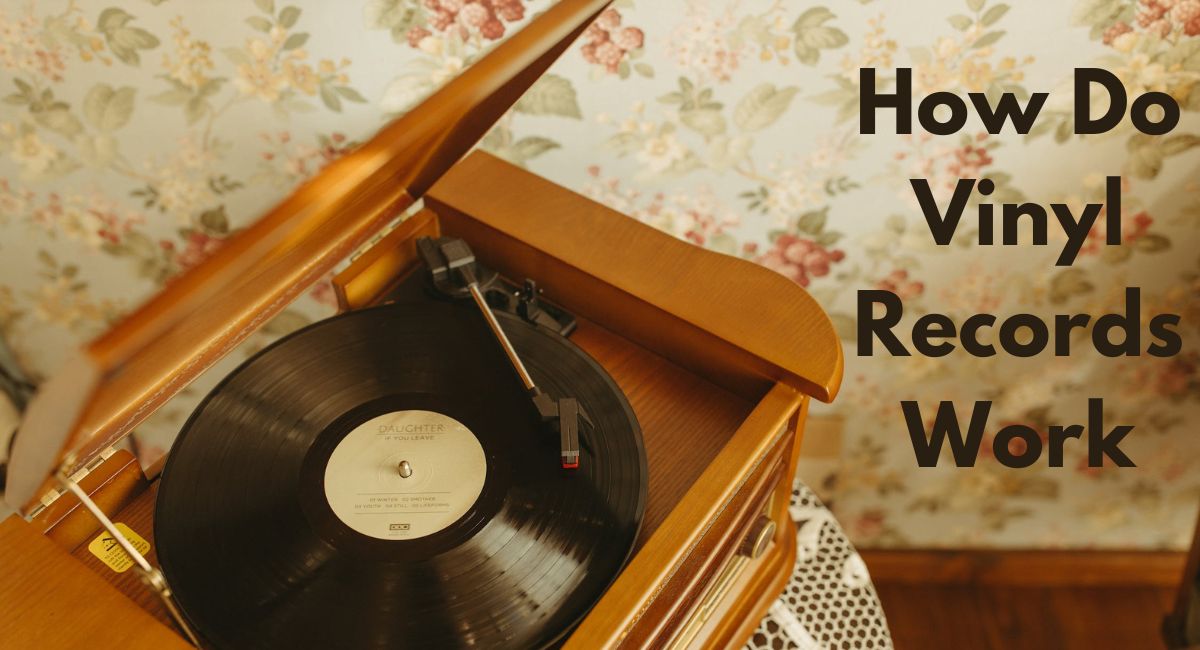Let me tell you something wild – music isn’t just sound, it’s a physical experience! I remember the first time I held a vinyl record and realized it was basically a magical sound sculpture. Sound waves captured in tiny grooves, just waiting to be brought to life by a needle. Crazy, right? The science behind vinyl records is like something out of a technological fairy tale, transforming microscopic ridges into the music that touches our souls.
Did you know that vinyl records have been around for over 70 years? That’s longer than most digital technologies have existed! Every time I drop a needle on a record, I’m participating in a nearly century-old tradition of sound reproduction that still manages to blow my mind. It’s not just listening to music—it’s experiencing a piece of audio engineering history.
Contents
The Basic Anatomy of a Vinyl Record
Let me break down what a vinyl record actually is – and trust me, it’s way more complex than you might think. At first glance, it looks like a simple black disc. But holy moly, there’s so much going on beneath that surface!
A typical vinyl record is made from polyvinyl chloride (PVC) – hence the name “vinyl”. But it’s not just a random chunk of plastic. These bad boys are precision-engineered sound machines. The most common sizes are 12-inch records that play at 33 1/3 RPM and 7-inch records that spin at 45 RPM. I learned this the hard way when I accidentally tried playing a 45 at 33 1/3 and everything sounded like it was sung by a sleepy whale!
The real magic happens in the grooves. These aren’t just random scratches – they’re meticulously carved sound waves. Imagine someone took a sound and literally carved its entire shape into a spiral track. Each microscopic ridge and valley represents a specific sound wave. The width, depth, and shape of these grooves determine everything from bass response to treble clarity.
Pro tip for new collectors: Heavyweight vinyl (180-gram records) tends to be more stable and can provide better sound quality. But don’t get too snobby – even a beat-up old record can sound amazing if it’s been well-maintained.
The Physics of Sound Reproduction
Sound is basically vibration that travels through the air. But on a vinyl record, it’s like those vibrations are frozen in time, waiting to be awakened. Mind-blowing, right?
When you place a stylus (that’s fancy talk for “needle”) into a record’s groove, it starts dancing. And I mean literally dancing – tiny, precise movements that translate physical shapes into electrical signals. The stylus rides along those microscopic waves, picking up every nuanced vibration. It’s like a tiny archaeological expedition, excavating sound from physical terrain.
I once watched a microscope video of a stylus moving through a record groove, and it was mesmerizing. The needle isn’t just sliding – it’s performing this incredibly intricate choreography, moving up and down and side to side simultaneously. These movements get translated into electrical signals by the cartridge, which then get amplified and pushed through your speakers.
Here’s a nerdy but cool fact: The stylus typically only contacts about 0.0005 inches of the record’s surface at any given moment. That’s smaller than a grain of salt! Yet from that tiny point of contact, entire symphonies emerge.
The Journey of Sound: From Groove to Speaker
Music’s journey from vinyl to your ears is like an epic adventure. Picture this: sound waves get carved into a master disc during recording, then get transformed into a stamped vinyl record. When you play it, the stylus becomes a time machine, reading those ancient sound waves and converting them back into music.
The tonearm plays a crucial role here – it’s not just holding the needle, it’s maintaining perfect balance and tracking. A poorly balanced tonearm can damage your records faster than you can say “scratch”. I learned this lesson after accidentally dropping a tonearm and creating a lovely permanent mark on one of my favorite jazz records.
Each component matters. The cartridge converts mechanical vibrations into electrical signals. The preamp boosts those signals. The amplifier makes them powerful enough to drive speakers. It’s like a relay race, with sound being passed from one technological athlete to another.
Factors Affecting Vinyl Record Sound Quality
Not all vinyl experiences are created equal. Dust, scratches, humidity – these are the sworn enemies of perfect sound reproduction. I’ve got horror stories about records that sounds like they were recorded during a sandstorm because of improper storage.
Tracking force is crucial. Too light, and the stylus won’t properly read the groove. Too heavy, and you’re basically sandpapering your record. Most cartridges need between 1.5 and 2.5 grams of tracking force – it’s a delicate balance.
Cleaning your records isn’t just recommended – it’s essential. A good carbon fiber brush can remove dust before and after playing. And invest in a decent record cleaning solution. Your future self will thank you.
Vinyl vs. Digital: Understanding the Analog Difference
Digital is precise. Analog is alive. That’s the fundamental difference.
Digital music is like a series of snapshots – precise but potentially sterile. Analog is a continuous wave, capturing every microscopic nuance. When people say vinyl sounds “warmer”, they’re talking about those tiny imperfections that make music feel human.
I’m not saying digital is bad. But vinyl? Vinyl is an experience. It requires attention, care, and participation. You can’t just hit shuffle – you’re committing to listening to an entire album, side to side.
Conclusion
Vinyl records aren’t just a way to play music – they’re a testament to human creativity. They represent a beautiful intersection of art, physics, and engineering. Each record is a physical artifact, a piece of musical history you can hold in your hands.
Want to dive deeper into the world of vinyl? Start collecting. Ask questions. Learn. And most importantly – listen. Really listen.

I am Kenneth Haney, an unyielding audiophile and an ardent collector of vinyl records. My love affair with vinyl started at a young age of 15. As a teenager, I found myself enchanted by the distinct warmth and depth that vinyl brought to music. Unlike digital music, vinyl records carry a tangibility, a piece of history, an art that exists far beyond the confines of an MP3 file.
